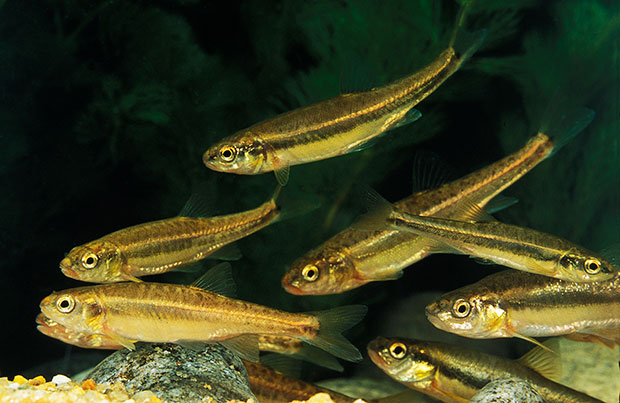
Spill of hazardous materials poses low risk to animals, say Ohio state officials
The impact of the spilled hazardous materials that burned for two days following a train derailment in February in East Palestine, Ohio, remains to be seen, but state officials appeared hopeful that it was limited.
“There is no indication there is an increased risk to livestock or poultry following the incident. The risk remains extremely low,” said Dr. Dennis Summers, Ohio state veterinarian, in a press release. “Air quality testing from the U.S. EPA (Environmental Protection Agency) is not detecting contaminants connected to the derailment in the air around East Palestine. There is no information to suggest pets are not safe outside.”
A preliminary report by the National Transportation Safety Board states the eastbound Norfolk Southern Railway freight train derailed 38 railcars just before 9 p.m. on February 3 in the central Ohio town near the state’s eastern border with Pennsylvania. Eleven of the derailed railcars carrying hazardous materials—including flammable liquids and gas—ignited, fueling fires that damaged an additional 12 nonderailed cars.

First responders implemented a 1-mile evacuation zone surrounding the derailment site that affected up to 2,000 residents. There were no reported fatalities or injuries.
On February 5, responders conducted a controlled burn of 115,580 gallons of vinyl chloride within five tank cars, according to the NTSB report. The evacuation zone was expanded from a 1- to 2-mile area, and ditches were dug to contain the vinyl chloride while it vaporized and burned. Vinyl chloride, also known as chloroethene, is a colorless industrial chemical used to make polymer.
In a February 22 email to the AVMA, Dr. Summers called reports of large numbers of dying animals “largely anecdotal, inaccurate, and over-exaggerated” via social media and other media channels.
“For over two weeks, I have spoken to numerous veterinarians, producers, and livestock commodity groups in that area,” he continued. “Currently, they are NOT reporting group deaths of sick livestock, attributable to the incident. There is no testing data or scientific evidence that there is any increased risk to the food safety system.” However, there is no organ or tissue test to determine if an animal died of toxicosis from vinyl chloride.
Anecdotes from veterinarians have described some cases of companion animals within the East Palestine area that presented with gastrointestinal distress, respiratory irritation, and inappetence, Dr. Summers said, but all have resolved with symptomatic treatment.
A local veterinarian has requested that the Ohio Department of Agriculture’s Animal Disease Diagnostic Laboratory (ADDL) examine the remains of a Bluetick Coonhound that lived near the derailment site and died on March 13 following a period of lethargy, anorexia, and drooling.
According to a press release from Governor Mike DeWine’s Office, the ADDL is also expected to receive the remains of two stray cats from the East Palestine area for necropsies and testing. The cats had been in veterinary care for the last eight days with upper respiratory issues.
The ADDL will conduct necropsies on all three animals to determine if chemical toxicity may have contributed to the deaths. To date, final testing results of deceased wildlife from the East Palestine area have not shown evidence of chemical toxicity.
Dr. Summers said in March that “no deaths of privately-owned pets or livestock have been reported to me that were directly attributable to the incident.”
An estimated 43,700 animals—mostly small aquatic animals—were killed directly as a result of the chemical spill. That situation has been remediated, Dr. Summers wrote, and streams are now testing at safe levels.
On February 23, Mary Mertz, director of the Ohio Department of Natural Resources, said roughly 38,222 minnow fish—ranging in size between 1 and 3 inches—were potentially killed as a result of the derailment. This was an adjustment from previous estimates of 3,500 aquatic animals affected. To arrive at the updated number, ODNR used a calculation endorsed by the American Fisheries Society to estimate the total number of minnows killed in the entire 5-mile span of waterway from the derailment site to the point where Bull Creek flows into the north fork of Little Beaver Creek.
ODNR estimated the total number of other aquatic animals killed was approximately 5,500, including small fish, crayfish, amphibians, and macroinvertebrates.
“Although dead aquatic species still remain in the impacted waterways, the entirety of the impact to the aquatic life is believed to have occurred in the first 24 hours after the derailment,” Mertz said in a statement. “There is no immediate threat to minnows, fish, or other aquatic species—in fact, live fish have returned to Leslie Run. None of the species killed are believed to be endangered or threatened.”
ODNR also received reports of three birds and an opossum that were found dead, but Mertz said the Ohio Department of Agriculture didn’t find any evidence of chemical poisoning.